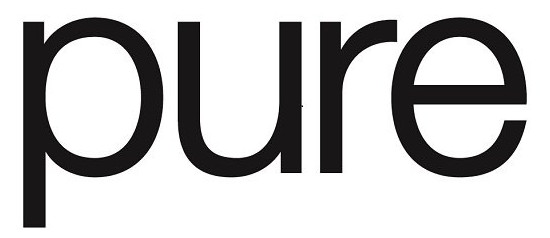Lately we’ve been seeing an increasing number of trademark cases that revolve around the relative rights of different members of the same enterprise: a family of companies asserting a family of marks theory in Wise F&I v. Allstate Ins. Co., different chapters of the Salvation Army allowed to register similar trademarks in In re The Salvation Army, and a trademark abandoned when it was owned by a subsidiary holding company rather than by its operating company parent in Noble House Home Furnishings,LLC v. Floorco Enterprises, LLC.
These cases, all TTAB proceedings, are hard to reconcile. Sometimes they treat the family members as a single entity and sometimes not. There is now another case, in the district court, to add to the mix. While I might not rely on a district court to necessarily get a fine nuance of trademark law right, right or wrong it adds to the confusion.
The substance of the trademark dispute in N.J. Physicians United Reciprocal Exchange v. Privilege Underwriters, Inc. isn’t important, except for a rare defense that comes into play. One of the claims against the defendant was for dilution under state law, but the defendant owned a federal trademark registration:
Section 43(c)(6) of the Lanham Act provides that one is immune to a claim of dilution under state law if the accused owns a federal trademark registration for the offending mark.
Except it wasn’t the defendant that owned the registration, it was owned by the defendant’s wholly-owned subsidiary. That presented no obstacle for the court though, below is the court’s full explanation:
Plaintiff’s argument is easily disposed of. As the parent, Defendants, generally, have standing to bring or oppose trademark infringement suits on behalf of their wholly-owned subsidiary because the “damage to the subsidiary will naturally lead to financial injury to [the parent].” Dalton v. Honda Motor Co., 425 Fed. Appx. 886, 890 (Fed. Cir. 2011) (citations and quotations omitted); see Jewelers Vigilance Comm., Inc. v. Ullenberg Corp., 823 F.2d 490, 493 (Fed. Cir. 1987) (“a parent corporation has standing to oppose on the basis of a mark owned and controlled by its subsidiary”); Lipton Indus. v. Ralston Purina Co., 670 F.2d 1024, 1029 (1982) (noting that the court has found standing to protect a subsidiary’s mark). Based in part on that principle, for the purposes of trademark registration, Title 15 U.S.C. § 1051 provides that the “owner of a trademark used in commerce may request registration of its trademark on the principal register ….” 15 U.S.C. § 1051. In turn, § 1201.03 of the Trademark Manual of Examining Procedures elaborates upon the requirements of that statute and states that as between parent and subsidiary corporations, ownership of a mark is a matter to be decided by the parties. See Trademark Manual, Section 1201.03(b); see also 1 J. McCarthy Trademarks and Unfair Competition, Section 16.13(c). In that regard, when a subsidiary company is wholly-owned and controlled by a parent corporation, such as is the case here, the trademark can be treated as “the common property of the parent and the subsidiary corporation.” Borden, Inc. v. Great Western Juice Co., 183 U.S.P.Q. (BNA) 570 (T.T.A.B. 1974); Ithaca Industries, Inc. v. Essence Communications, Inc., 706 F. Supp. 1195, 1207 (W.D.N.C. 1986). Thus, because Pure Risk Management is a wholly-owned subsidiary of, and controlled by, Defendants, the ownership of the PURE Designation is treated as common property between these entities for trademark purposes. In that respect, Plaintiff’s state law claim for trademark dilution is barred by § 1125 as the PURE Designation is registered with the USPTO; Plaintiff’s Third Claim for Trademark Dilution under New Jersey state law is dismissed.
To say that “the ownership of the PURE Designation is treated as common property between these entities for trademark purposes” is certainly an overstatement and not supported by the cited cases. The cases stand only for the proposition that the parent-subsidiary relationship is such that the parent has a real interest in the outcome of a dispute involving its subsidiary, i.e., that it has standing. The cases recognize that a parent suffers from harm visited on its subsidiary, but that doesn’t mean that the parent has all the substantive arguments available to it that its subsidiary would have.
The statement in the TMEP and McCarthy that “ownership of a mark is a matter to be decided by the parties” doesn’t stretch that far either. Yes, of course it’s true that a company can structure ownership of its assets any way it likes, but that doesn’t mean that the structuring cannot also have consequences – if corporate form is so easily ignored, then there would be no reason for such careful crafting of complex corporate enterprises for tax and liability purposes.
This is an unpublished decision, an expedient toss-off, probably with no ramifications beyond the private dispute between the parties. But a number of years ago the IP holding company model was popular as a tax savings vehicle and is still being used today, in my view without adequate consideration of the effect it might have on the validity of the trademark assets. This case is an example of what I suspect is going to be an increasing numbers of cases involving trademarks owned by IP holding company subsidiaries. Time will tell what the consequences will be.
N.J. Physicians United Reciprocal Exch. v. Privilege Underwriters, Inc., No. 15-6911 (FLW) (D.N.J. Oct. 18, 2016).

This work is licensed under a Creative Commons Attribution-NoDerivatives 4.0 International License.


Leave a Reply